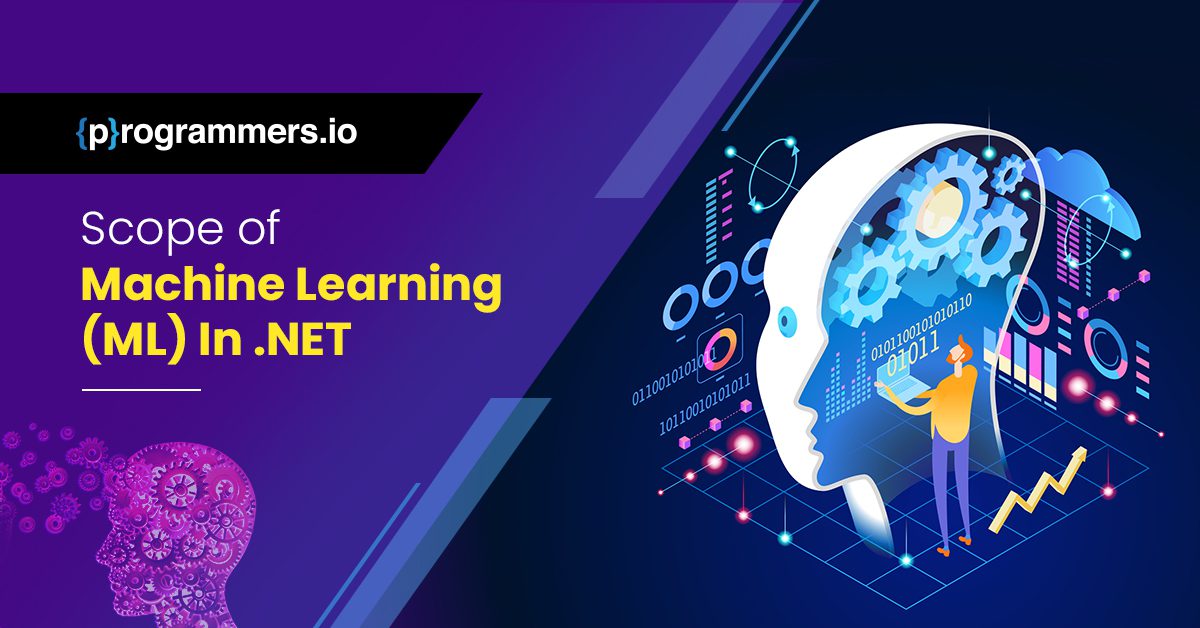Machine Learning (ML), also known as Artificial Intelligence (AI) is becoming one of the most popular technologies in the world. Machine learning has applications in almost every industry and is the backbone of search engines like Google, Bing, and DuckDuckGo.
Machine Learning/Artificial Intelligence is about targeting specific decisions based on certain outcomes. Some of the most popular uses for ML/AI are in chatbot artificial intelligence, natural language processing, product recommendation, and sentiment analysis.
Most business managers and CEOs today will tell you that they are really concerned about hiring the right talent. One of the biggest challenges they face is finding machine learning experts who can apply ML techniques in the appropriate technologies.
Do you want to know more about whether .NET developers are still relevant and what machine learning has to do with it? Learn more.
Is .NET Still Relevant in 2022?
Microsoft developed the .NET framework as an open-source, cross-platform software tool for application development. .NET is a full-stack framework used to build websites, web and desktop applications, games, and more. The latest version, .NET 6 was released in November of 2021.
What about now? Almost 6 years after its original release .NET is still, without a doubt, very popular. In fact, .NET is one of the most loved development tools among professional programmers.

Many of the biggest companies in the world use .NET software in their web applications, including Samsung, Dell, JP Morgan Chase, and Cisco. Companies GoDaddy, StackOverflow, and Intel all use .NET to build their web resources.
.NET seems to be going nowhere anytime soon.
The Scope of Machine Learning in .NET
Machine learning has a variety of applications. ML can be used for fraud detection, spam and malware detection, image recognition, speech recognition, and much more.
More specifically, machine learning is applied to web applications and web services for extra functionality. Amazon Web Services, Microsoft Azure, IBM Cloud, and Google Cloud all have machine learning as an essential part of their functionality.
Python is the language most often used by developers for machine learning applications. Python is a dynamic, lightweight language that has many frameworks and databases designed for handling the large amounts of data required to solve problems in machine learning.
Read: Role of Python in AI
In a .NET environment the use of Python can hinder the production process, especially when part of the project gets written in a language like C#. .NET has its own machine learning library called ML.NET that can remedy this problem.
ML.NET for .NET Developers
With ML.NET, .NET developers can add features such as sentiment analysis, speech detection, and intelligent search to their web applications. ML.NET works with Windows, Azure, PowerBI, and other visualization tools.
The ML.NET library provides the complete workflow for applying machine learning to applications using the .NET framework. Let’s take a look at that workflow.
ML.NET Workflow
ML.NET allows developers to build and integrate machine learning models for .NET apps. These models go through a workflow process which is as follows:
- Data gets collected then loaded as an object
- Pipeline gets built
- A machine learning algorithm gets applied to the data combined with the pipeline to extract features
- The model gets trained then evaluated for improvement
- Predictions are made based on model evaluation
This workflow is standard in the field of machine learning and is blazing fast with ML.NET.
High Performance
ML.NET was compared side-by-side with SciKit-Learn (a popular Python ML framework) and H20 (a cloud AI framework) to determine which one could perform the best. ML.NET outperformed both other frameworks, proving to be more reliable on larger data sets and faster on smaller data sets.
Library Support
ML.NET is open-source and integrates with other ML libraries such as TenserFlow, ONNX, and Infer.NET.
The Benefits of ML.NET
.NET developers do not need to be machine learning or artificial intelligence experts in order to use ML.NET. ML.NET makes it seamless for developers to build and test models because it comes pre-packaged with several ready-to-deploy models. Devs can simply load data and ML.NET can take care of the rest.
ML.NET also makes the production process smooth for enterprise-application developers because of the overlap in programming language integration. It is much easier to deal with one language tool, like C#, to deploy an application than it is to deal with multiple.
ML.NET also works well with a variety of visualization tools. Microsoft Azure, PowerBI, and even Jupyter Notebook are all compatible with ML.NET.
The Future of .NET and Machine Learning
What does the future hold for ML and .NET? Their futures seem to be bright. Software engineering jobs are expected to grow by 22% over the next decade. This growth includes both machine learning engineer and .NET developer positions.
With ML becoming a more and more essential part of the tech industry, .NET developers will soon need to add machine learning techniques to their skillset.
Microsoft continues to develop .NET, adding more and more functionality over time. It won’t be long before ML.NET becomes an industry standard for enterprise-application machine learning integration.
ML and .NET Development Are Here to Stay
Machine learning and .NET are going nowhere. Both technologies are expected to grow side by side and there appears to be no end in sight. ML.NET will continue to expand and give more and more .NET developers a chance to contribute to the machine learning and artificial intelligence ecosystem.





